Today’s Current Affairs: 14th May 2025 for UPSC IAS exams, State PSC exams, SSC CGL, State SSC, RRB, Railways, Banking Exam & IBPS, etc
Table of Contents
Dongria Kondh Community:

The National Human Rights Commission (NHRC) recently sought for an Action Taken Report from Odisha Chief Secretary on the precarious living condition, lack of basic amenities and necessities of life of more than 10,000 families from “Dongria Kondh”, a Particularly Vulnerable Tribal Group (PVTG) Community.
- It is a Particularly Vulnerable Tribal Group (PVTG)
- Dongria Kondhs are ancient occupants of Niyamgiri hills spread across Kalahandi and Rayagada districts of Odisha.
- In the polytheistic animist worldview of the Kondh, the hilltops and their associated forests are regarded as supreme deities.
- They derive their name from dongar, meaning ‘hill’ and the name for themselves is Jharnia: protector of streams.
- They trace their ancestry to Niyam Raja, a mythical god-king, who they believe is a creator of the Niyamgiri hills and whose stewardship has been left to them.
- The forest slopes of Niyamgiri hills and streams that flow from the hilltop are the means of survival for the Dongria Kondh community.
- Even their art reflects the mountains, in the triangular designs found on village shrines to the many gods of the village, farm and forests and their leader, Niyam Raja.
- The Dongria have distinctive jewellery, tattoos and hairstyles. Women wear many rings through their ears and three through their noses, while boys wear two nose rings.
- They have no overarching political or religious leader, Clans and villages have their own leaders and individuals with specific ceremonial functions, including the beju and bejuni, male and female priests.
- The kondh tribe speaks two languages namely “kuyi” and “kuvi”, vocabulary which is completely unrelated to odiya, the state’s official language.
- The economy and livelihood of Dongria kondh is dependent on collection of Non-timber forest products (NTFPs) and podu cultivation.
- They are traditionally horticulturists.
High Mobility Artillery Rocket System:

The military of Taiwan recently conducted its first live-firing of the American-supplied high mobility artillery rocket system (HIMARS).
- It is a lightweight, multiple rocket launcher.
- It allows for the launching of multiple, precision-guided rockets.
- It is manufactured by Lockheed Martin Corporation, a United States-based security and aerospace company.
- HIMARS is intended to engage and defeat artillery, air defence concentrations, trucks, light armour, and personnel carriers, as well as support troop and supply concentrations.
- It is an air-transportable wheeled launcher mounted on a 5-ton Family of Medium Tactical Vehicles (FMTV).
- It can carry either a launcher pod of six rockets (range of approximately 43 miles) or one MGM-140 Army Tactical Missile System (ATACMS), which can hit targets up to 200 miles away.
- The HIMARS requires less than 20 seconds to be prepared for firing, and a full launcher load of six rockets can be fired within 45 seconds.
- The system launches its weapons and moves away from the area at high speed before enemy forces locate the launch site.
- The HIMARS is equipped with the Increased Crew Protection cabin, which is designed to protect the three-man operating crew against plume gases, rocket launch debris, and small arms.
Germanium:
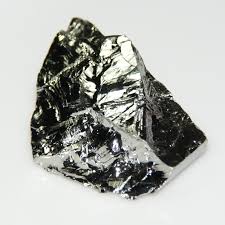
India is engaging with the Chinese government to navigate export restrictions on germanium, a critical mineral that is used in manufacturing of semiconductors, fiber optic cables and solar panels.
- It is a chemical element between silicon and tin in Group 14 (IVa) of the periodic table.
- It has the chemical symbol Ge and the atomic number 32.
- It is a silvery-gray metalloid, intermediate in properties between the metals and the nonmetals.
- It has a diamondlike crystalline structure, and it is similar in chemical and physical properties to silicon.
- Germanium is stable in air and water and is unaffected by alkalis and acids, except nitric acid.
- Although germanium was not discovered until 1886 by Clemens Winkler, a German chemist, its existence, properties, and position in the periodic system had been predicted in 1871 by the Russian chemist Dmitry Ivanovich Mendeleyev, who called the hypothetical element ekasilicon.
- Germanium did not become economically significant until after 1945, when its properties as a semiconductor were recognized as being of value in electronics.
- It remains of primary importance in the manufacture of transistors and of components for devices such as rectifiers and photocells.
- It is widely distributed in nature but is too reactive to occur free.
- Germanium ores are rare. They are found in small quantities as the minerals germanite and argyrodite.
- Today, germanium is extracted as a by-product of zinc production and from coal fly ash.
- It is estimated that 75% of worldwide production of germanium is sourced from zinc ores, mainly the zinc sulfide mineral sphalerite, and 25% from coal.
- The major worldwide producer of germanium is China, responsible for around 60% of total production.
- The remaining production of germanium comes from Canada, Finland, Russia, and the United States.
Buddhavanam:
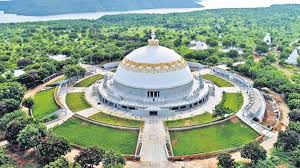
The contestants of Miss World 2025 from 22 countries visited Buddhavanam, a Buddhist theme park, on the occasion of Buddha Purnima recently.
- It is a Buddhist theme park located on the northern bank of Krishna River in Telangana.
- The Government of India has sanctioned the project as part of developing an integrated Buddhist Circuit with a vision to attract a large number of domestic and international tourists, particularly from southeast Asia.
- It has an extent of 279 acres.
- It is developed to showcase the life and teachings of Gautama Buddha.
- It features the Entrance plaza, Buddhacharitha Vanam (Life of Buddha), Jataka Park (which highlights stories from Buddha’s previous lives), Dhyana Vanam for meditation, the Stupa Vanam (home to the imposing Maha Stupa), and an in-house Buddhist Heritage Museum.
- There are intricate carvings on the drum and dome portions of the Mahastupa and a virtual hanging sky with lotus petals under the sky inside the Mahastupa.
- Located just beside Nagarjuna Sagar, a reservoir formed due to the construction of the dam across the river Krishna, Nagarjunakonda or Sriparvata – Vijayapuri, served as capital city of the Ikshvaku dynasty, which ruled Andhradesa during the 3rd and 4th centuries A.D.
- Nagarjunakonda was named after the famous Buddhist scholar and Madhyamika philosopher Acharya Nagarjuna.
- Nagarjunakonda was a centre of Mahayana Buddhism, where many Buddhist sects had their monasteries, shrines, and stupas built to propagate the Dhamma.
- Excavations conducted at Nagarjunakonda between 1954 and 1960 have revealed the existence of a Maha Stupa, Votive Stupas, Chaityas, Silamandapas and a good number of Buddhist sculptural panels and antiquities.
- The structures exposed also included a palace complex and a few Brahmanical temples built of bricks.
- The sculptural panels were depicted with the major events of the life of the Buddha and Jataka stories.
- Most of the structures were reconstructed on the Nagarjunakonda Island and at Anupu, a ferry point on the right bank of the river Krishna.
Microbial Phosphorus Gatekeeping:

A recent study published in Nature Geoscience examined the role of soil microbes in phosphorus cycling over 700,000 years in the Cooloola coastal dune system, located in Cooloola National Park, Queensland, Australia.
- Phosphorus (P) is an essential macronutrient required by all life forms. It is crucial for: Energy metabolism (e.g., ATP production), Cell membrane synthesis (phospholipids), Photosynthesis and genetic functions (DNA/RNA).
- In ancient and weathered soils, such as those in Australia, phosphorus levels decline significantly over time due to mineral weathering, making it the primary limiting nutrient in many ecosystems.
- The study discovered that soil microbes—especially fungi and bacteria—act as ‘phosphorus gatekeepers’ by regulating how phosphorus is accessed and cycled in the soil.
- Microbes use several adaptive mechanisms to survive phosphorus scarcity:
- Replacing membrane phospholipids with non-phosphorus lipids,
- Accumulating microbial lipids (fats) that reduce the need for phosphorus,
- Optimising phosphorus uses efficiency in their metabolism.
- This microbial gatekeeping strongly influences how phosphorus becomes available to plants, creating a balance of competition and facilitation: Microbes and plants compete for phosphorus, But microbes aid plants by recycling phosphorus and making it more accessible in the long run.
Ferroelectricity:
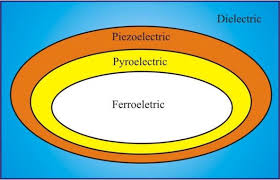
Researchers at Oak Ridge National Laboratory (ORNL) have developed a breakthrough technique to visualise the dynamics of domain walls with unprecedented detail.
- Ferroelectricity is a property of certain non-conducting crystals or dielectrics that exhibit spontaneous electric polarisation, where the centres of positive and negative charges separate, making one side of the crystal positive and the other negative.
- This electric polarisation can be reversed by applying an appropriate external electric field.
- The term ferroelectric is derived from ferromagnetism, where magnetic domains align spontaneously; similarly, in ferroelectrics, electric dipoles align spontaneously in domains.
- Examples of ferroelectric materials include barium titanate (BaTiO₃) and Rochelle salt.
- Ferroelectric domains are clusters where dipoles are aligned. These domains can be reoriented by strong electric fields.
- The delay in response when domains reorient is termed ferroelectric hysteresis, analogous to ferromagnetic hysteresis.
- Ferroelectricity vanishes above a critical temperature called the Curie Temperature, where thermal agitation disrupts dipole alignment.
- Domain walls are the boundaries between differently polarised regions in a ferroelectric material.
- These walls often exhibit electrical or magnetic properties different from the surrounding domains.
- Some domain walls may become electrically conductive even when the bulk of the material is non-conductive, or magnetically active even if the domain itself is nonmagnetic.
- These unique properties make domain walls potential candidates for nanoelectronic components for memory, sensing, and signal processing in low-power devices.
Axions and HAYSTAC Experiment:
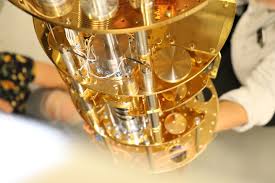
The HAYSTAC results, published in Physical Review Letters, marked a technological advance, even though no axions were detected. The experiment significantly expanded the parameter space of axion mass and coupling strength.
- Axions are hypothetical subatomic particles originally proposed in the late 1970s to explain the strong CP problem in quantum chromodynamics (QCD).
- They later emerged as one of the most promising candidates for dark matter.
- The axion’s role was to suppress CP-violating terms in QCD by dynamically adjusting the theta parameter (θ) to nearly zero.
- Over time, axions emerged as a leading dark matter candidate due to their unique properties: Electromagnetically neutral, Extremely light, Very weak interaction with ordinary matter and radiation.
- They are hypothesised to make up Cold Dark Matter (CDM)—the dominant form of dark matter thought to constitute ~85% of the universe’s matter content.
- Pioneering work by Sikivie, Wilczek, Dine, Preskill, and others showed that cosmological production of axions in the early universe could match observed dark matter density.
- The HAYSTAC experiment (Haloscope At Yale Sensitive To Axion Cold Dark Matter) is a collaborative initiative between Yale, Berkeley and Johns Hopkins, aimed at directly detecting axions by exploiting their potential to convert into photons within a strong magnetic field.
- The experiment uses a haloscope, a special type of detector designed by Pierre Sikivie—which incorporates a microwave cavity inside a powerful magnetic field.
- In its Phase II, HAYSTAC conducted the widest frequency search for dark matter axions to date. It introduced quantum squeezing techniques to reduce quantum noise, thereby enhancing the sensitivity of its haloscope detector.
- The HAYSTAC experiment and Advanced LIGO are currently the only two major physics experiments utilising quantum squeezing to improve precision in measurements.
- Quantum squeezing involves manipulating the uncertainty in quantum states to suppress random fluctuations, which improves the signal-to-noise ratio in weak signal detection, especially important for identifying rare particles like axions.
State of the World’s Nursing 2025 Report:

The World Health Organization (WHO) released the State of the World’s Nursing (SoWN) 2025 report on International Nurses Day (IND).
Key Findings of the SoWN 2025 Report:
- The global nursing workforce grew from 27.9 million in 2018 to 29.8 million in 2023, but 78% of nurses are concentrated in countries representing just 49% of the global population.
- The global nurse-to-population ratio is 37.1 per 10,000, with Europe having five times more nurses than Africa and the Eastern Mediterranean, and high-income countries having 10 times more than low-income countries.
- By 2030, the global nurse workforce is projected to reach 36 million, reducing the shortage from 5.8 million in 2023 to 4.1 million, with 70% of shortages concentrated in Africa and the Eastern Mediterranean.
- International Migration: 1 in 7 nurses globally are foreign-born. In HICs, this rises to 23%, compared to 8% in upper middle-income, 1% in lower middle-income, and 3% in LICs.
- Mental Health and Regulation of Nurses: 92% of countries have regulatory bodies for nurses. 94% have minimum wage laws, but only 42% of countries provide mental health support.
- India has only 1.9 nurses per 1,000 people, far below the WHO’s recommended ratio of 3 nurses per 1,000.
- India has over 3.3 million nurses registered with the Indian Nursing Council (INC), an autonomous body under the Ministry of Health & Family Welfare, established under the Indian Nursing Council Act, 1947.
- India committed to opening 157 new nursing colleges by mid-2025 that will add 15,700 Bachelor of Science in Nursing (B.Sc. Nursing) seats across the country.
UN Vesak Day 2025:
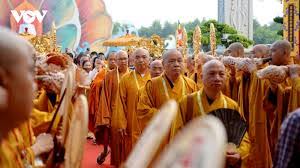
United Nations Vesak Day (International Day of Vesak) was held in May 2025 in Ho Chi Minh City, Vietnam, with delegates from 85 countries, themed “Solidarity and Tolerance for Human Dignity: Buddhist Wisdom for World Peace and Sustainable Development.”
- In another development, India successfully intervened to stop the auction of Piprahwa Buddhist relics by Sotheby’s Hong Kong auction house.
- Vesak Day, is the holiest day in Buddhism, observed on the full moon of May, marks the birth, enlightenment, and Mahaparinirvana of Lord Buddha, all of which happened on the same day.
- Recognized by the UN since 1999, Vesak has been celebrated at the UN Headquarters and worldwide with Buddhist organizations, with the first official event being held in 2000 in New York.
- It highlights the global significance of Buddhist philosophy in promoting peace, compassion, and ethical living.
Maharana Pratap Jayanti 2025:
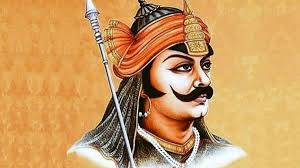
The Prime Minister paid rich tributes to the valiant warrior, Maharana Pratap on the occasion of his Jayanti on 9th May 2025.
- Maharana Pratap, born on 9th May 1540 in Kumbhalgarh, Rajasthan, was the 13th King of Mewar and the eldest son of Udai Singh II.
- Maharana Udai Singh II ruled the kingdom of Mewar with his capital at Chittor and was also the founder of the city of Udaipur.
- The Battle of Haldighati (18th June 1576) was fought between Maharana Pratap and Raja Man Singh of Amber, a general of Mughal emperor Akbar; though Maharana Pratap fought bravely, he was defeated by the Mughal forces.
- After 1579, Maharana Pratap regained Western Mewar and set up his new capital at Chavand near Dungarpur.
- He died on 19th January 1597 and was succeeded by his son Amar Singh, who submitted to Emperor Jahangir in 1614.
SVAMITVA Scheme & WB Land Conference 2025:
At the World Bank Land Conference 2025, India showcased its pioneering initiatives in land governance— the SVAMITVA Scheme and the Gram Manchitra platform as part of the plenary session on “Good Practices and Challenges in Land Tenure and Governance Reform”. The SVAMITVA (Survey of Villages and Mapping with Improvised Technology in Village Areas) was launched by the Ministry of Panchayati Raj in 2020. It is a central sector scheme to provide legal ownership of residential properties in rural areas using drone and GIS technology. It aimed at creating a Record of Rights for rural property owners, focusing on abadi areas (inhabited regions). As of April 2025, the scheme has issued property cards to 24.4 million households in 1.6 lakh villages, unlocking land value worth USD 1.162 trillion.
Mission D3:
Mission D3, a social reform movement started in November 2024 by tribal youths in Alirajpur and Jhabua districts, is successfully eliminating dowry, liquor, and DJ music from tribal weddings.A grassroots social campaign led by Bhil and Bhilala tribal youths to cleanse tribal marriages of 3Ds: Dahej (Dowry), Daroo (Liquor), and DJ music.Aim is to promote simple, debt-free weddings and prevent financial exploitation of poor tribal families, To curb the cycle of debt and migration post-marriage.
MY Bharat Portal:
Union Minister appealed to youth in Patna to actively join the ‘MY Bharat’ portal and contribute to nation-building initiatives.Mera Yuva Bharat (MY Bharat) is an autonomous body under the Ministry of Youth Affairs and Sports. It provides a tech-driven institutional platform for youth development and youth-led transformation. Launched in October 31, 2023 on the birth anniversary of Sardar Vallabhbhai Patel.
Geotubing:
A joint study by NIOT and KSCADC confirmed that geotubing offshore breakwaters at Poonthura (Kerala) effectively controlled coastal erosion and promoted sustainable beach formation.Geotubing uses large, tubular geotextile containers (geotubes) filled with sand or slurry, placed underwater to reduce wave energy and prevent erosion. In Poonthura, three vertical layers of 15-meter circumference geotubes were installed perpendicular to the coast, forming submerged breakwaters that trap and deposit sand.
Bhutan Becomes First Country to Integrate Crypto Payments in Tourism:
The Royal Government of Bhutan has taken a major step toward digital innovation in tourism by launching a cryptocurrency-based payment system through a strategic partnership with Binance Pay and DK Bank. This move makes Bhutan the first sovereign country to officially integrate crypto payments into its national tourism policy, offering global travellers a seamless, cashless experience while enhancing financial inclusion within the kingdom.This initiative is currently making headlines as it marks a historic first in sovereign adoption of crypto payments for public tourism services. By allowing international visitors to pay using over 100 cryptocurrencies, Bhutan is setting a global precedent in the blockchain and travel sectors while also enhancing accessibility for rural vendors.
Centre Reconsiders ‘Safe Harbour’ Clause in IT Act Amid Fake News Concerns:
The Government of India is planning to revise the “safe harbour” provisions under Section 79 of the Information Technology Act, 2000. The Ministry of Information and Broadcasting (I&B), in its submission to the Parliamentary Standing Committee on Communication and Information Technology, highlighted the need to make social media intermediaries more accountable for the content hosted on their platforms.
Bhuwan Ribhu Becomes First Indian Lawyer to Receive World Law Congress Honour:
India’s fight for child justice, renowned lawyer and child rights activist Bhuwan Ribhu has become the first Indian lawyer to receive the Medal of Honour from the World Jurist Association. Awarded during the World Law Congress 2025 held in the Dominican Republic, the accolade acknowledges Ribhu’s two-decade-long commitment to eradicating child exploitation through legal reforms, court interventions, and advocacy. His leadership has transformed child protection from a welfare issue into a matter of criminal justice.Bhuwan Ribhu was awarded the World Jurist Association’s Medal of Honour on May 5, 2025, marking the first time an Indian lawyer has been bestowed with this global recognition. The award celebrates his lifelong legal work addressing child labour, trafficking, child marriage, and sexual abuse, and recognises his pivotal role in reforming India’s child protection laws.
Bandaru Dattatraya’s Autobiography ‘Janta Ki Kahani’ Released by Vice-President:
Vice-President Jagdeep Dhankhar released the autobiography ‘Janta Ki Kahani – Meri Aatamkatha’ authored by Haryana Governor Bandaru Dattatraya at a special ceremony held at Maharashtra Sadan, New Delhi. The event witnessed heartfelt tributes, political camaraderie, and reflections on a life devoted to public service and social welfare.The autobiography ‘Janta Ki Kahani – Meri Aatamkatha’ was recently launched on May 9, 2025, by Vice-President Jagdeep Dhankhar. The book highlights the personal, political, and social journey of Bandaru Dattatraya, currently serving as the Governor of Haryana. The event also paid homage to the victims of the terrorist attack in Pahalgam, Jammu and Kashmir.
C-DOT and Synergy Quantum Partner to Develop Quantum Key Distribution for Drones:
The Centre for Development of Telematics (C-DOT) has partnered with Synergy Quantum India to develop Quantum Key Distribution (QKD) technologies specifically optimized for drone-based systems. This collaboration aims to strengthen India’s capabilities in quantum-secure communications under the vision of Atmanirbhar Bharat.The news is significant as it marks India’s entry into developing drone-based QKD technology, combining the strengths of public R&D and private innovation. The MoU signed on May 12, 2025, paves the way for next-generation secure communication systems, especially in critical areas like defence, emergency response, and government infrastructure.
Operation Keller:
The Indian Army launched a high-intensity counter-terror operation in the dense forests of Keller in Shopian, South Kashmir. Named Operation Keller, the mission was initiated following credible intelligence reports about heavily armed militants hiding in the region.This operation reflects India’s continued commitment to neutralising terrorist threats within the Valley and ensuring the safety of its citizens.Operation Keller comes just days after Operation Sindoor, an airstrike carried out by India targeting terrorist launch pads in Pakistan and Pakistan-occupied Kashmir (PoK). Operation Sindoor was launched in retaliation for a brutal terror attack in Pahalgam that claimed 26 lives on April 22.
HCLTech Joins European Commission’s AI Pact to Champion Responsible AI:
Global tech major HCLTech has signed the European Commission’s AI Pact, reaffirming its dedication to the ethical and responsible development of AI technologies. The pact, a voluntary initiative, precedes the implementation of the European Union’s AI Act, the first comprehensive legal framework for AI regulation, and aims to foster safety, transparency, and human oversight in AI usage.HCLTech’s participation in the European Commission’s AI Pact is timely and significant as the world moves closer to adopting comprehensive AI regulatory frameworks. As AI adoption surges globally, this commitment highlights HCLTech’s leadership in ensuring that artificial intelligence is used ethically, with safeguards around accountability, fairness, and privacy—aligning with the upcoming EU AI Act.
Ant Group to Sell 4% Stake in Paytm Worth ₹2,066 Crore via Bulk Deal:
Chinese financial services major Ant Group, through its affiliate Antfin (Netherlands) Holding BV, has announced plans to sell a 4% stake in fintech company One97 Communications Ltd—the parent firm of Paytm—for approximately ₹2,066 crore via bulk deals on Indian stock exchanges. The sale will be executed at a floor price of ₹809.75 per share, representing a 6.5% discount to Paytm’s last closing price on the National Stock Exchange (NSE).This move is significant as it signals Ant Group’s gradual withdrawal from Indian fintech giant Paytm, amid evolving geopolitical dynamics and portfolio rebalancing by global investors. It also marks one of the largest secondary market deals in recent times and reflects foreign investors’ shifting strategy in Indian tech unicorns.
US-China Agree to Slash Tariffs Amid Trade War De-escalation:
The United States and China have agreed to slash reciprocal tariffs by 115% as part of a 90-day truce in their prolonged trade war. The deal, finalized after high-level talks in Geneva between US Treasury Secretary Scott Bessent and Chinese Vice Premier He Lifeng, marks a major step to ease tensions between the world’s two largest economies.This agreement comes after years of escalating trade tensions between the US and China, which had led to hundreds of billions of dollars in tariffs, supply chain disruptions, and global economic uncertainty. The 115% reduction in reciprocal tariffs signals a shift toward cooperation and economic diplomacy.
Tax exemption for residences of active defence personnel : AP
Gesture to honour India’s armed forces, Andhra Pradesh Deputy Chief Minister Pawan Kalyan announced a full property tax exemption for homes owned by active defence personnel located within gram panchayat areas across the state. The move comes as an expansion of an earlier benefit limited to only retired soldiers or those posted at border areas, and now applies to all active personnel, regardless of their current posting.This announcement gained prominence following the death of 23-year-old soldier Murali Naik, an Agniveer from Sri Sathya Sai district, who lost his life during an exchange of fire in Jammu and Kashmir on May 9, 2025. The timing of the tax waiver underscores the state government’s recognition of the sacrifices made by defence personnel and their families.




